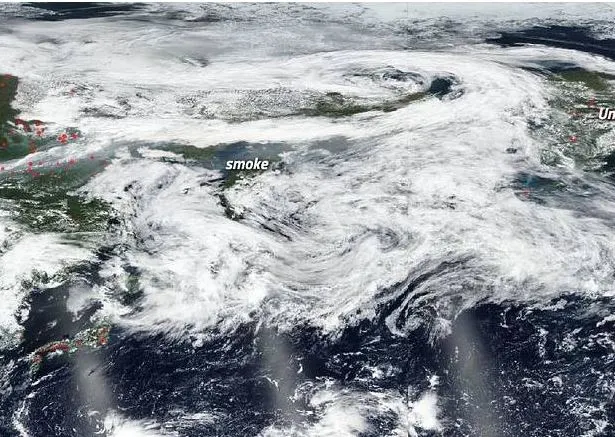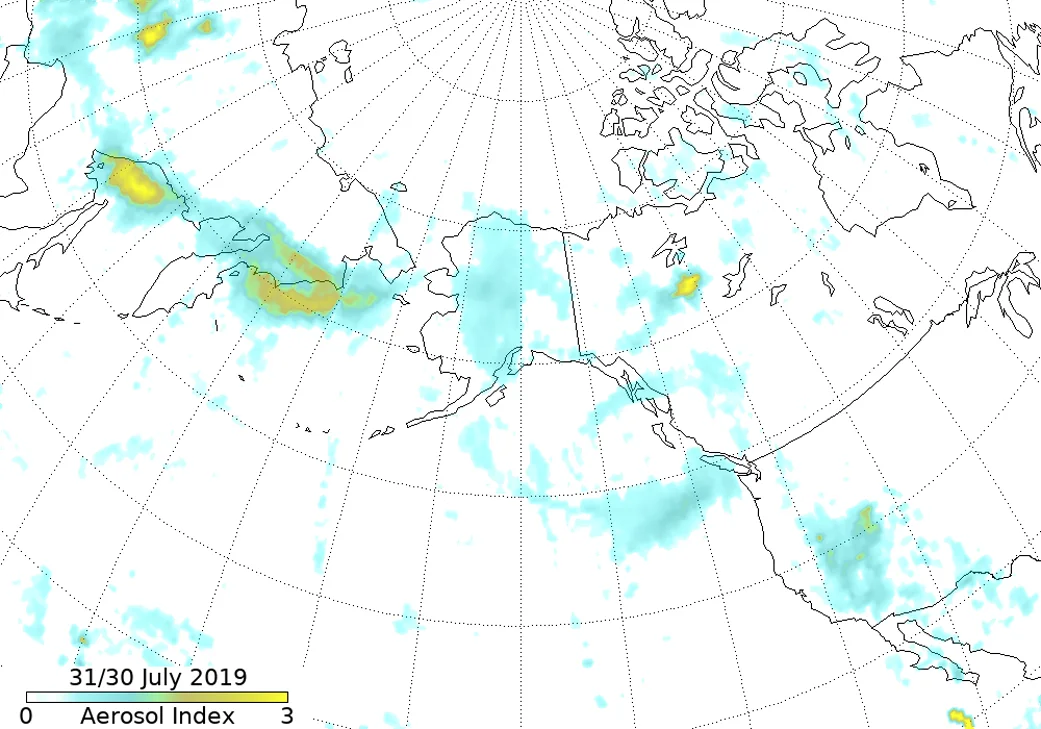
Smoke from Siberian wildfires is blowing into Canada
The Arctic is experiencing a particularly bad wildfire season.
With 2019 featuring the hottest June on record and likely also the hottest July on record, it's been prime conditions for wildfires, particularly in the Arctic, which is having an unprecedented season.
Through June and much of July, the Copernicus Atmosphere Monitoring Service (CAMS) tracked more than 100 wildfires north of the Arctic circle. Alaska and Siberia have been particularly impacted.
Now, smoke from the wildfires in Siberia has reached such an extent that they are beginning to have an impact on Canadians:
"The smoke from the Siberian fires can now be seen stretching across eastern Russia, into Alaska (maybe mixed with smoke from local fires), down the west coast of Canada (and over the eastern Pacific) and, then, over Vancouver and Seattle," Colin Seftor, atmospheric scientist at NASA's Goddard Space Flight Center, said in a release from the agency.
Canada hasn't been without its own northern wildfire woes. High Level, Alta., not far south of the Arctic Circle, reached more than 400,000 hectares in burned land earlier in July. It can be seen in the image below, which measures aerosols from wildfires:

Conversely, some parts of the country that suffered extreme wildfire seasons in recent years have experienced something of a break this year.
British Columbia suffered its worst wildfire season on record in 2018, when more than 2,100 wildfires burned around 1.3 million hectares of land. One fire, at Alkali Lake, was in an area of the province so ideal for wildfires that firefighters were still working on holdover fires at the site a year later.
By contrast, the 588 fires that had burned as of August 1st this year had scorched around 12,662 hectares, less than a tenth the land area of 2018's fires.










